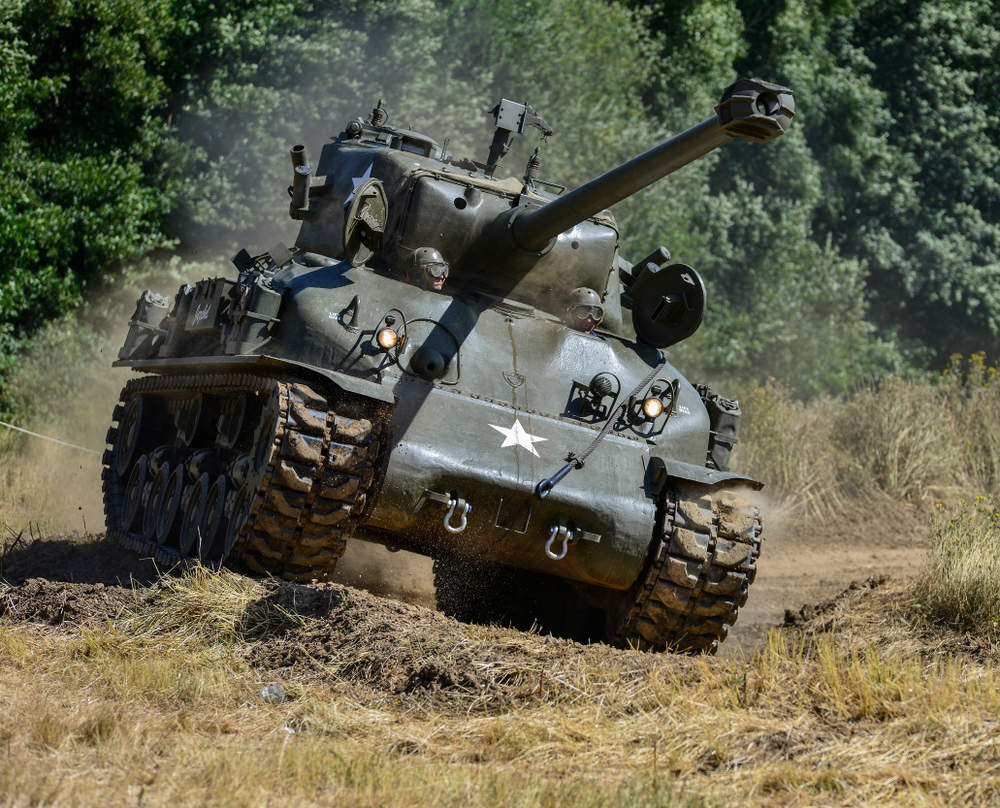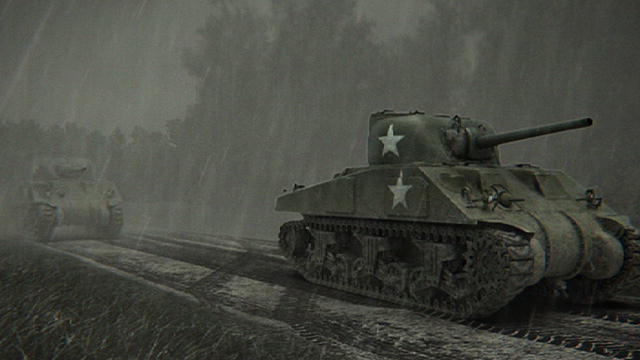

The infantry scattered, but the remaining two German tanks had used the time to close on the British tank. Mitchell’s gunners countered by frantically loading “case-shot,” which scattered like a shotgun charge, and fired madly into the approaching crowd of enemy soldiers. The British paid a price for their sudden stop, and the German infantry attempted to swarm the Mark IV. Mitchell’s gunner wasted no time, and pulverized one of the AV7s with three direct hits. He pulled back from the German tanks, and stopped. Thinking fast, Mitchell arrived at a risky solution. The German tanks, however, managed to shell both female Mark IVs, which sent them retreating into the forest. The Mark IV’s maneuverability saved Mitchell’s tank from enemy tank fire, but the artillery barrage from the night before had shredded the ground, and the bouncing prevented the gunners from scoring a hit. The male Mark IV, commanded by Lieutenant Frank Mitchell, ran headlong into the AV7s when they exited the forest surrounding Villers-Bretonneux, where the German tanks attacked supported by infantry. Thus, when one male and two female Mark IVs squared off against three A7Vs, the Germans held a distinct advantage in firepower. It was a design concept that no one has EVER revisited. Designers intended the female to cover the male from infantry attacks while it’s counterpart presumably pounded away with its main guns. The female mounted five machine guns, but no main cannons.

The male mounted two 57mm main guns, doubling the A7Vs firepower, and three machine guns. Mark IV’s came in two variants, male and female. The British tank’s armament is… where things get weird. The Mark IV, however, was the product of several years of development and overcame the failure of earlier models to maneuver across rough terrain. The A7V could not cross trenches, for example. Technically, the German A7V was better armored, mounted two machine guns, and used a main gun similar to the British model, but failed miserably when maneuvering around a battlefield. Shortly after dawn, infantry supported by A7Vs captured the city, which threatened the critical railway junction at Amiens, and the British ordered three of their Mark IV tanks to counter the advancing German Armor. The battle began when roughly 1,200 pieces of German artillery blasted Villers-Bretonneux with mustard gas and high explosive shells throughout the night. On April 24, 1918, the first tank-versus-tank battle got underway when three German A7Vs and three British Mark IVs unexpectedly ran into one another during the Second Battle of Villers-Bretonneux. Second Battle of Villers-Bretonneux (April 24-27, 1918) In 1916, even the armored vehicle’s most ardent proponents could not have envisioned the following events where tanks, soldiers, and government production boards converged, often disastrously, on the battlefield. When the first tank debuted in World War I, however, First Lieutenant Patton was chasing Pancho Villa in Mexico, Oberleutnant Rommel was heading to Romania with the Royal Wurttemberg Mountain Battalion, and the armored hulk’s future was anything but certain. Nearly three-quarters of a century’s passed since their deaths, yet their names evoke images of fire-belching armored beasts to the most disinterested students of military history. Patton, for example, share a powerful niche in the public’s consciousness. General field Marschall Erwin Rommel and General George S. Designed to survive the crucible of battle while destroying the enemy, the tank is a brutal weapon of war that flourished under the guidance of gifted, and often romanticized, tacticians. The tank epitomizes warfare’s key concepts: combat power and mobility, and no major contemporary military lacks an armored backbone.

Few weapons shaped the course of war like the steel-clad behemoths that dominated the 20th-century battlefield.


 0 kommentar(er)
0 kommentar(er)
